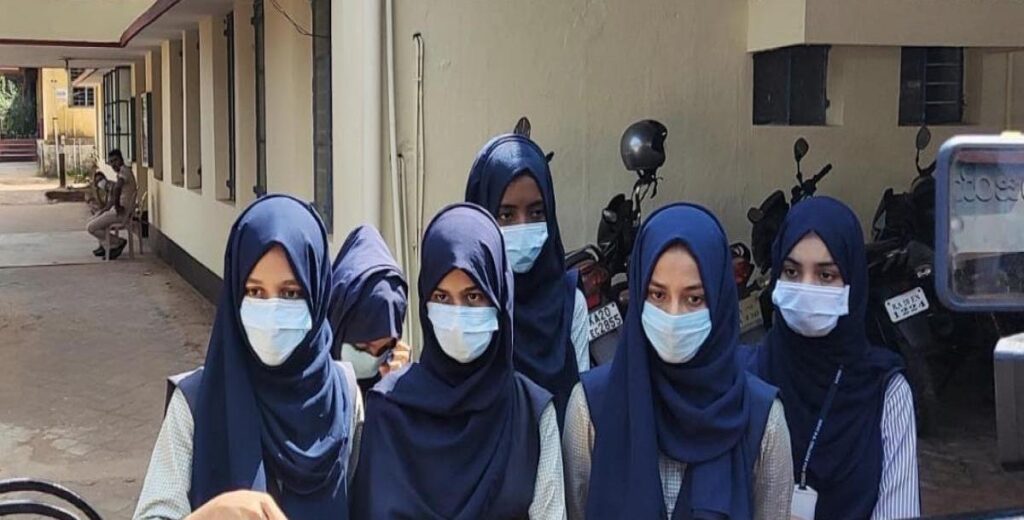In 2009, when then Supreme Court judge Justice Markandey Katju thundered that he didn’t want to set the country on the road to “Talibanisation” by allowing a Muslim student in Madhya Pradesh to flaunt a beard in school, the fire and fury he had to face forced him to take back his words.
Possibly, the only instance in which the normally pugnacious Justice Katju took his words back in a case. He apologised to the aggrieved community, recalled the order and the case went back to another bench which allowed the Class X student to continue with his classes with a beard for the time being.
The storm blew over soon after that and the court was never called upon to adjudicate upon the complex legal issues raised in this specific case. While granting the student permission to attend school with a beard, Justices B.N. Aggarwal and G.S. Singhvi, made some very significant remarks on these aspects.
Both fairly conservative judges, Justices Aggarwal and Singhvi warned against any regimentation in schools on the ground that this would end up excluding almost every other student from the system.
DIVERSITY OVER UNIFORMITY?
Tomorrow you will say only fair-complexioned students can attend schools; the judges remarked.
Next you will insist that those with body piercings, an in-thing among the younger generation, will not be allowed, the bench observed, suggesting perhaps that it was a slippery slope that the authorities mustn’t go down on if they didn’t want to hit rock bottom.
Justice Katju had in his ruling cited several grounds to disallow beards in school. He reasoned that the school was a missionary school which received no aid from the state and was hence entitled to lay down its own disciplinary rules.
Schools have to enforce discipline lest things go out of hand and girls demand the right to wear the hijab (headscarf), he said, arguments which are now reflected in the Karnataka High Court judgement.
JUSTICE KATJU RETRACTS REMARKS ON TALIBANISATION; RECALLS ORDER
During the hearing, Justice Katju demanded to know from the student’s lawyer why he wasn’t sporting a beard if it was an essential religious practice. An unforeseen consequence of this was that the lawyer grew a beard citing his faith.
Justice Katju also expressed the fear in open court that the demand for beards is conceded, it will spur demands by Muslim girls for permission to wear the hijab to school.
In turn, this could lead to radicalisation in the community and lead to terrorism, he suggested, drawing much criticism from all quarters about his subconscious Islamophobia.
Katju denied the charge, citing his love for Urdu and his homeland Kashmir, but withdrew his order.
Almost a decade after these developments in the top court, the Karnataka High Court has ruled that hijab was at best a cultural practice and not an essential religious practice.
The top court has again been asked to examine the constitutionality of Karnataka government orders allowing educational institutions to impose a dress code, which excludes the hijab, inside school. There is much to be said on the issue.
Those for the hijab claim that the girls want to wear the hijab and that it hasn’t been imposed on them. It is a choice for them, they claim.
They also contend that an important fundamental right — their right to education — cannot be denied to them on this ground. Hijab was also part of their right to freedom to practice, profess and propagate their religion and cannot be taken away.
That would be an unreasonable restriction on the right. Those against the hijab claim that schools were well within their powers to lay down any uniform to enforce discipline inside the campus.
There’s much to be said on keeping religion away from children, some argue, forgetting the fact that bindis, chunnis, bangles, pujas — all explicit expressions of the religious majority are permitted.
There has been the occasional furore over missionary schools disallowing bindis and bangles in schools though these have been only at the local level.
KENDRYA VIDYALAYAS PERMIT HIJAB OR HEADSCARF
Another significant minority i.e., the Sikhs are also constitutionally permitted to exhibit their religious symbols such as the kesh and the kada. Kendriya Vidyalayas also permit the hijab or headscarf if worn with the uniform.
In spite of this, the Karnataka High Court ruling constricted the freedom of religion guaranteed to all in the Constitution to only freedom of conscience and not expression of outward religious symbols.
The hijab debate at the national level is therefore in many ways a test case for the Indian judiciary. Should the court consider the issue piecemeal and reject the idea of conceding any such right to wear the hijab inside a school?
Even if right to education falls on the wayside? In Karnataka hijab-wearing students have been refused permission to either attend classes or sit for the examinations in a country where female literacy figures leave much to be desired.
Or should the court look at it through the prism of minority identity politics as it exists today or the right to religion and allow the hijab in schools too?
Can the right to don a hijab be subjected to reasonable restrictions inside a school? If so, if denial of permission to don the hijab inside schools was reasonable or not.
Should the court allow for more diversity in religious matters notwithstanding the constitutional goal of working towards ensuring gender equality and gender justice and allow time to wither away such practices? Gender activists and feminists aren’t too positive on this. The answers are hence not easy.

